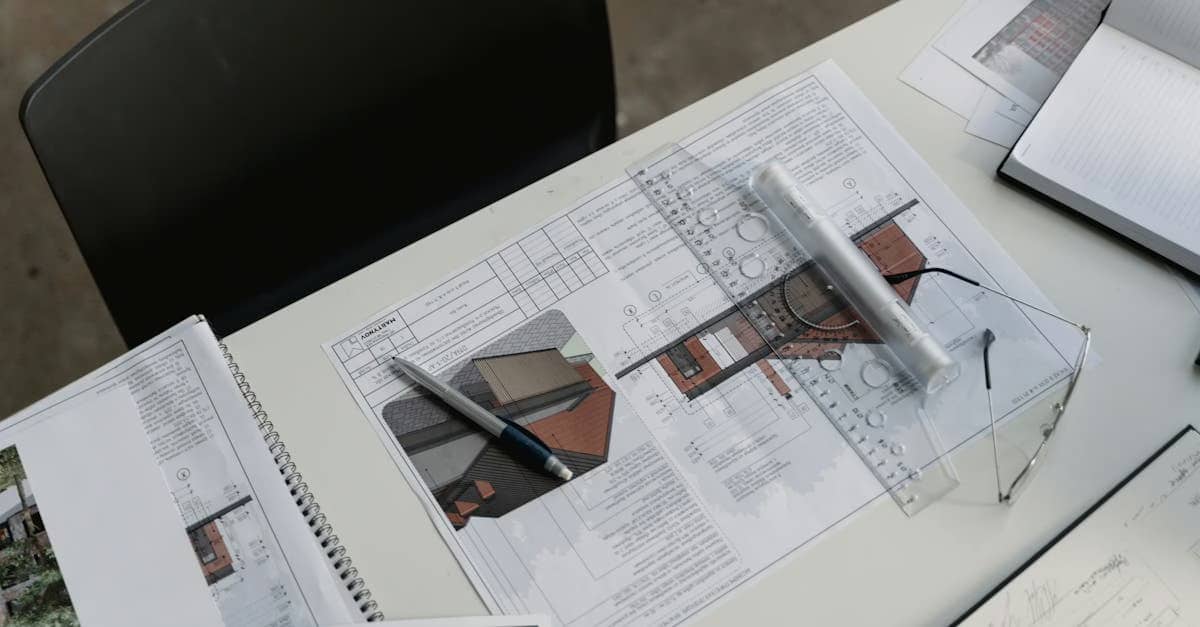Streamlining Your Brokerage: How to Work Seamlessly With a VA in Another Country
How to Work Seamlessly With a VA in Another Country is a question many real estate brokers ponder as they eye global talent pools to scale their operations without skyrocketing overhead. While the opportunity for significant cost savings and increased efficiency is clear, brokers often wrestle with the operational pain points of managing remote teams across time zones and, critically, ensuring ironclad compliance with ever-evolving state and federal real estate regulations. As a former Realtor, I’ve seen firsthand the complexities involved in managing a busy brokerage, where one missed deadline or compliance oversight can have serious repercussions. Leveraging virtual assistants, especially those overseas, presents a powerful solution, but it requires a strategic approach to overcome communication barriers, establish clear workflows, and integrate them securely into your back-office processes, particularly when dealing with sensitive client data and intricate transaction steps. Finding the right tools and systems is paramount to turning this potential into a seamless, compliant, and productive reality for your real estate business.
Building Your Global Real Estate Team: Practical Strategies
Integrating a virtual assistant (VA) from another country into your real estate brokerage workflow offers tremendous potential, but success hinges on meticulous planning and execution. It’s not simply about hiring someone; it’s about extending your team across borders while maintaining your brand’s standard of service and, most importantly, adherence to real estate broker compliance. Let’s delve into the practical strategies needed to make this work seamlessly.
Selecting the Right Virtual Assistant Partner
The foundation of working seamlessly with a VA in another country starts with finding the right fit. Beyond basic administrative skills, look for VAs with experience in the real estate industry, or at least a strong aptitude for learning industry-specific processes. Consider their communication skills, technical proficiency, and ability to work autonomously. Platforms specializing in virtual assistants for real estate often vet candidates for relevant skills and experience, saving you significant time and effort.
Defining Roles and Expectations Clearly
Once you’ve identified potential candidates, clearly define the scope of work. What specific tasks will the VA handle? Are they focused on transaction coordination support, marketing assistance, lead follow-up, or administrative duties? Providing a detailed job description and outlining daily, weekly, and monthly responsibilities is crucial. This clarity prevents misunderstandings and ensures the VA can perform their duties effectively. Remember, clarity in delegation is key when you want to work seamlessly with a VA in another country.
Establishing Robust Communication Channels
Time zones are perhaps the most apparent challenge when working with international VAs. Establishing core overlap hours for synchronous communication is vital for urgent matters and daily check-ins. For asynchronous communication, leverage tools that facilitate clear messaging and documentation. Project management software, instant messaging apps, and shared calendars become indispensable tools.
Leveraging Technology for Seamless Interaction
Invest in communication and project management tools that support remote collaboration. Platforms like Slack or Microsoft Teams for quick communication, Trello or Asana for task tracking, and cloud-based document sharing services (like Google Drive or Dropbox) are essential. Video conferencing tools like Zoom or Google Meet facilitate face-to-face meetings, building rapport and allowing for more nuanced discussions. Utilizing robust transaction coordinator tools, like those offered by ReBillion.ai, ensures that all parties, including your remote VA, have access to the necessary information and can follow predefined workflows.
Structuring Workflows and Task Management
Effective task management is non-negotiable for successful remote collaboration. Break down complex tasks into smaller, manageable steps. Document your processes thoroughly, creating standard operating procedures (SOPs) for common tasks. This provides your VA with a clear roadmap and reduces the need for constant supervision.
Implementing Standard Operating Procedures (SOPs)
Detailed SOPs for tasks like MLS data entry, setting up showings, drafting simple marketing materials, managing CRM inputs, or assisting with transaction coordination paperwork are invaluable. These documents serve as training manuals and reference guides, ensuring consistency and accuracy regardless of where your team member is located. Providing these structured workflows helps your VA contribute meaningfully and allows you to work seamlessly with a VA in another country.
Ensuring Real Estate Broker Compliance with Remote Teams
This is arguably the most critical aspect of working with international VAs. As the broker, you remain responsible for all compliance requirements. This includes data privacy, handling sensitive client information, adhering to state-specific real estate laws, and maintaining proper record-keeping. Simply put, your VA must operate within the same compliance framework as your local team.
Data Security and Privacy Protocols
Implement strict data security protocols. Use secure, encrypted platforms for document sharing and communication. Avoid sending sensitive client information via unsecured email. Train your VA on data privacy best practices and ensure they understand the importance of confidentiality. Consider using cloud-based systems that offer robust security features and controlled access permissions.
Leveraging Technology for Compliance Monitoring
Technology plays a crucial role in maintaining compliance with remote teams. ReBillion.ai, for instance, offers features like AI-powered transaction coordinators and agent-broker compliance monitoring tools that can help track deadlines, ensure required documents are collected, and flag potential compliance issues automatically. These tools provide an extra layer of oversight and give you peace of mind, helping you work seamlessly with a VA in another country without compromising legal requirements.
Measuring Performance and Providing Feedback
Regularly review your VA’s work and provide constructive feedback. Establish key performance indicators (KPIs) based on the tasks they are responsible for. This could include response times, accuracy rates, timely completion of tasks, or client/agent satisfaction metrics if they interact directly. Consistent feedback helps your VA improve and ensures they are meeting your expectations.
Tools for Tracking Productivity and Quality
Utilize project management tools to monitor task progress. Time tracking software can help understand how time is being spent (ensure this complies with any labor laws, though for VAs it’s typically project or task-based). More importantly, focus on the quality and accuracy of the work delivered. Regularly review completed tasks, especially those involving compliance-sensitive activities.
Building a Strong Relationship
Remember that your VA is an extension of your team. Foster a positive working relationship built on trust and mutual respect. Regular communication, acknowledging their contributions, and involving them in team discussions (where appropriate) helps them feel valued and integrated, even from a distance. This human element is vital to truly work seamlessly with a VA in another country.
Actionable Tips for Brokers/Admins
- Conduct thorough interviews: Assess communication skills, real estate aptitude, and technical savvy beyond the resume.
- Start with a pilot project: Assign a smaller, defined set of tasks to evaluate performance and fit before scaling up.
- Provide access to necessary tools: Ensure your VA has secure access to your CRM, transaction management software, and communication platforms.
- Schedule regular check-ins: Daily or weekly video calls help maintain connection and address issues promptly, bridging the gap when you work seamlessly with a VA in another country.
- Document everything: Create clear SOPs, process maps, and training materials accessible to your remote team.
Why It Matters: Operational and Financial Impact
For real estate brokerages, the ability to work seamlessly with a VA in another country translates directly into significant operational and financial advantages. The most obvious benefit is cost reduction. Offshore VAs typically come at a lower cost than local administrative staff, freeing up capital that can be reinvested in growth, marketing, or technology. Beyond savings, VAs handle repetitive, time-consuming administrative tasks, allowing your high-dollar agents and brokers to focus on lead generation, client relationships, and closing deals – the activities that directly generate revenue.
Furthermore, leveraging a global talent pool means you can access specialized skills and provide round-the-clock support if needed, offering flexibility that local hiring might not. This increased efficiency and capacity allow brokerages to scale without the overhead associated with expanding physical office space or hiring full-time employees with comprehensive benefits packages. Properly integrating VAs, especially with the support of tools like ReBillion.ai’s smart back office and workflow automation, streamlines processes, reduces errors, enhances compliance, and ultimately contributes to a more profitable and scalable business model.
Key Points
Working seamlessly with a VA in another country requires clear communication, defined workflows, robust technology for task management and compliance, and a focus on building trust. Leveraging virtual assistants for real estate tasks like transaction coordination support and admin frees up agents, boosts brokerage efficiency, and can reduce costs.
FAQs
Is it legal to use an international VA for real estate tasks?
Yes, it is legal, but you must ensure they operate under your direction and adhere to all relevant US state and federal real estate laws and data privacy regulations.
What are common tasks for a real estate VA?
Common tasks include data entry, scheduling, managing emails, social media posting, creating simple marketing materials, and supporting transaction coordination activities.
How do I ensure data security with an international VA?
Use secure cloud platforms, strong passwords, limited access permissions, and train your VA on strict data privacy protocols and the importance of confidentiality.
How do time zones affect working with a VA overseas?
Time zones require scheduling overlapping work hours for critical synchronous tasks and relying on asynchronous communication and clear documentation for other activities.
Do I need specific transaction coordinator tools when using a remote VA?
Absolutely. Robust transaction coordinator tools are essential for managing deadlines, documents, and communication seamlessly and compliantly with a remote team member.
Resources
- ReBillion.ai – Brokerage Solutions
- ReBillion.ai Real Estate Blog
- AI Virtual Assistants for Real Estate Brokerages
- AI-Powered Transaction Coordinators
- VAs & AI Tools for Real Estate Agents
Conclusion
Embracing the opportunity to work seamlessly with a VA in another country is a strategic move for modern real estate brokerages looking to enhance efficiency, manage costs, and scale operations effectively. While challenges exist, particularly around communication and compliance, they are easily navigable with the right processes, technology, and a commitment to building a strong remote team relationship. By implementing clear workflows, leveraging powerful tools like those offered by ReBillion.ai, and prioritizing compliance and communication, you can unlock the immense potential of a global workforce to support your agents and streamline your back office, ultimately driving growth and profitability.
ReBillion.ai helps real estate brokers streamline operations with AI-powered transaction coordination, virtual assistants, and intelligent back-office automation. Whether you’re scaling your team or closing more deals, ReBillion.ai is built to simplify your brokerage’s compliance, efficiency, and growth. Visit ReBillion.ai to explore solutions or schedule a consultation.


